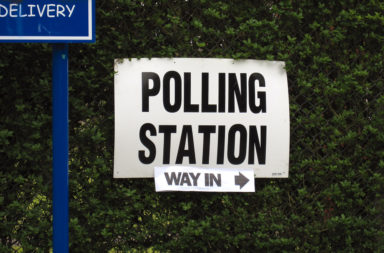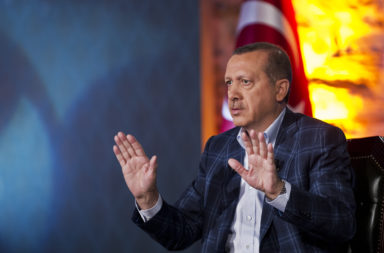Over 50 migrants went missing at sea and 2,500 were rescued over the June 10 2017 weekend, after leaving Libya. According to the UN refugee agency, the migrants – mainly from sub-Sahara Africa – were found on flimsy dinghies off the coast of Libya. And eight were found dead on inflatable boats.
According to the International Organisation for Migration, arrivals of migrants crossing the Mediterranean this year are on the rise. The number had already reached an estimated 60,521 by May 24 2017, with around 80% arriving in Italy. By the same date, 1,530 had died at sea.
An overwhelming majority travel through Libya, despite the risk that the country presents.
On May 25, the Libyan coastguard allegedly opened fire on a migrant boat, forcing hundreds to jump off into the water. All up, 34 people, including children, drowned.
The limits of a strategy
Libya is at the centre of bilateral and multilateral strategies to reduce migration flows to the EU. The country of 6.4 million people currently faces a complicated transition after toppling its long-term leader Muammar Gaddafi in 2011, which led to much instability.
It has struggled to impose order on the many armed militia that have been fighting for power since Gaddafi’s fall.
In February, the current transitional internationally recognised-government – led by Prime Minister Fayaz Al Serraj – signed a memorandum of understanding with Italy to combat illegal migration. The approach adopted by the EU and Italy aims to give Libya a major role in illegal migration control and refugee protection in exchange for assistance and funding.
The proposition came a few weeks before the Valletta Summit in Malta, where the EU agreed to intensify efforts to reinforce Libya’s capacity to fight smuggling and transit activities. These programs intend to train and equip the coast guard, strengthen border control in the south of Libya, foster the country’s hosting capacity for blocked and readmitted migrants, and fight smuggling.
But, in Libya and in Europe, many argue against pursuing these types of agreements. The MOU between Libya and Italy was blocked on March 22 by the Tripoli Appeals Court for lack of approval by Libya’s House of Representatives .
Outside Libya, observers think that outsourcing the control and management of migration flows to a country ridden with conflicts and without an effective government has serious implications for the living conditions and human rights of tens of thousands of people.
Ancient smuggling routes
There are also other reasons to wonder whether such strategies would work in Libya. One of them – as pointed out by the Malta program propositions – is the business model of migrant smugglers.
Libyan migrant-smuggling routes follow ancient paths. Some recent archaeological research shows them to potentially be pre-Islamic and as old as from the third century AD.
Also known as Trans-Saharan trade routes, they were crucial for merchants during the Arabo-Islamic expansion around the seventh and eighth century AD.
Today, they still run through both the west and east of Libya, connecting the Sahel to the Mediterranean via the vast and difficult to control expanses of the desert in the country’s southern regions.
In post- revolution Libya, old and new forms of trafficking, including human trafficking, still take place. The Gaddafi regime used to rely on some local tribes to control these routes and took advantage of trafficking and smuggling both politically and financially.
According to a Global Initiative report launched in March 2017, these smuggling routes have developed into much better organised networks and transnational consortia thanks to an active diaspora “able to handle routes and volumes of people requiring substantial logistical and financial capacity”.
Their consolidation has coincided with a boom in migrants and refugees searching for ways into Europe.
@IOM_Libya reports that 1,944 immigrants have been saved between May 25th and June 7th ! #Libya #Immigration pic.twitter.com/ASCVJXy4zw
— STACO (@STACO_LY) June 11, 2017
A lucrative business
The combination of circumstances has made the smuggling of migrants a very lucrative business for criminal groups, and some people from local communities are also involved.
At the same time, the fragmentation of power structures and the collapse of the country’s economy have increased the risk of smuggling becoming endemic. It also fuels other criminal activities, such as weapons or drugs trafficking.
These endeavours often involve the same tribes and families who used to dominate transregional trade from Western Africa through Niger to Quaatrun, or through Algeria to Ghat on the way to Sebha. But now, they rely heavily on local armed groups that have taken control of routes and strategic infrastructure (including oil fields and airports) and handle cash instead of working with the malfunctioning banking system.
Migration facilitation activities – from driving, scouting and recruiting, to the provision of various services in hotspots – involve many low-income people living along the routes. A Libyan driver from North Niger to Hamada, south of Tripoli, for instance, makes around 200 dinars (€130) for a trip of more than 1000 km of desert tracks and dangerous roads.
The smuggling business has become a primary source of earning – directly or indirectly – and a factor of corruption in local communities and municipalities. The business is also resilient and reinvents itself when needed, redesigning routes and strategies.
One of the best known examples of this kind of business is Colombia’s drugs cartels. Their combination of economic and political interests is an extremely powerful and difficult model to counteract with a predominantly security-based approach.
In Libya’s case, increasing the capability of local entities, such as the coast guard, for instance, which have been allegedly involved in corruption cases could be counterproductive for migration containment. Even if current strategies could lower the number of migrants crossing the Mediterranean in the short term, the humanitarian and security situation in Libya may disastrously deteriorate.
Thousands of people are currently held in Libya, sometimes for as long as ten months. There are between 24 government-run detention centres but militias also own some and build others, making their own rules.
Some migrants might be repatriated, but, according to Unicef reports, other could simply be trafficked.
Addressing the smuggling economy
To tackle migration challenges effectively requires addressing the political economy created by migrant smuggling.
A key objective should be to break the integrated transnational networks that have been consolidating over the past years, to gradually isolate their criminal leadership from other groups and individuals whose livelihood, in the absence of alternatives, has come to depend on the latter.
Success stories of communities turning against smugglers can be found in Libya. In the western city-port of Zuwara, for instance, citizen militias took the fight against smugglers in their own hands, eventually forcing them out out of the city.
But a long-term solution requires economic alternatives to develop the regions affected by smuggling routes and the creation of alternative forms of business opportunities for locals. This approach would eventually help decriminalise the economy.
The right conditions for this could only be created through a political conflict settlement, bringing about a stable economy and the rehabilitation of infrastructure. In the meantime, a parallel step-by-step approach can reduce the pervasiveness of smuggling and undermine the smugglers’ business model.
Building economic opportunities
A direct dialogue is needed between all major stakeholders to identify concrete solutions based on the available economic opportunities. In south-western Libya, for instance, a normal resumption of production in major oil fields could positively influence local and regional economies.
The El Feel oil field, which used to produce 80,000 barrels per day (bpd) and the Sharara oil field, which resumed production on June 9 and amounts to over 200,000 bpd, will have a positive impact on the local economy through the rehabilitation of electricity production facilities, local airports and transportation infrastructure, as well as through increased revenue of municipalities.
For this to happen, international oil companies present in Libya need to secure the conditions to exploit oil fields that are currently limited by security concerns. It would be in their long-term interest to invest in Libya’s local development, rather than paying to protect the oil infrastructure and staff on the ground.
But the armed groups that oil companies rely on for security are often the same that play a key role in smuggling and trafficking networks.
Talking to armed groups
These groups have an interest in further exploiting human smuggling as its revenues allow them to run and maintain the costly military units that are central to their power and influence.
To counter human smuggling, key stakeholders such as Europe, international oil companies, Libyan economic actors (the National Oil Company, for instance, and the Central Bank) should promote and facilitate local dialogue.
Discussions should focus on political recognition and inclusion of the leadership of some of the armed groups as well as of the tribal communities they belong to, especially those that have a history of marginalisation.
A form of judicial protection for those who have committed crimes could provide the needed quid pro quo to push leaders to disarm and exit the smuggling business. Armed groups’ rank and file could be assisted in finding alternative ways to make a living, and would probably be glad to abandon illegal activities.
Municipalities could facilitate the search for logistical solutions in exchange for increased revenue from resumed oil production, and increased influence and legitimacy.
In the search for effective alternative approaches to illegal migration, dialogue and direct negotiations with local stakeholders could lead to the design of adapted, effective policies. They should not be neglected.





